If good things come in tiny packages, the city of Atlanta is blessed to receive Karen Anderson’s gift of creative public art: Tiny Doors ATL. Her talent for bringing big wonder to tiny spaces is a treat that everyone shares when they uncover her clever doors hidden throughout Atlanta’s beloved neighborhoods or on her super popular Instagram account. Learn more about how Karen ended up in the South, her move from punk rock to public art and why people have become obsessed with finding her artistic entryways. In what may be the South’s coolest treasure hunt (the treasure being magic and imagination), Karen shares why it’s important that, instead of “art fading into the background, it can be an active participant in the life of the city.” Open your door, tiny or otherwise, and meet our newest FACE of the South, Karen Anderson.
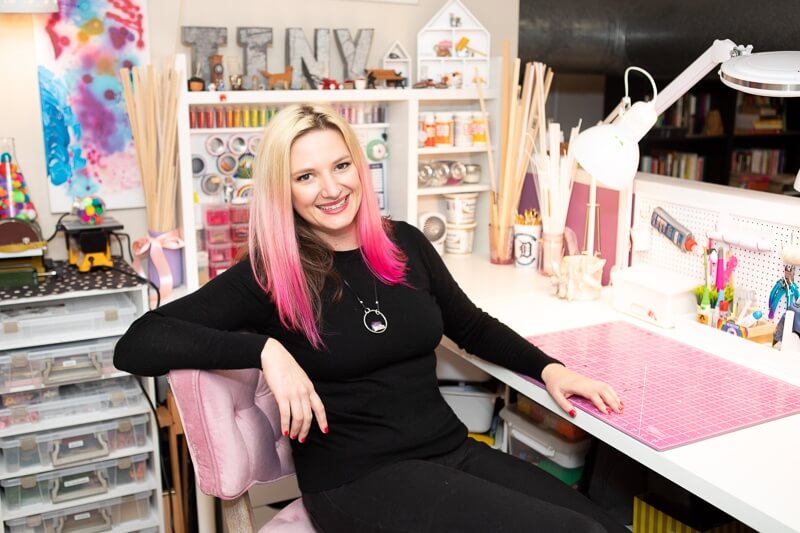
How did Tiny Doors ATL get its start?
As a kid, I always loved miniatures and gave away my dollhouse furniture in order to make my own. In my hometown of Ann Arbor, Michigan, there are fairy doors. I wanted to take that concept and spin it, make it about reflecting the neighborhood while letting people decide for themselves who or what was behind the door.
When my friend Sarah Meng and I added the first door in the Krog Street tunnel five years ago, we decided to call it ‘Tiny Doors ATL,’ to make it look like the tunnel itself, and let it be a canvas for imagination. Slowly, people started leaving tiny items at the doors and taking photos, and six months later, I started the Instagram to give people a place to connect. Today Tiny Doors ATL has over 111,000 followers, and neither of us could have imagined how Atlanta would embrace this project, or that it would eventually become the job I am lucky enough to do every day.
Why is public art so important in Atlanta and other urban settings?
Public art is part of what drew me to Atlanta. The ongoing conversation of artists painting the same tunnel over and over again, playing off of one another’s work … it’s like watching the pulse of the city. Atlanta is a big city with lots of diverse neighborhoods, and I hoped to highlight those differences and ultimately weave a thread that would foster new friendships and conversations.
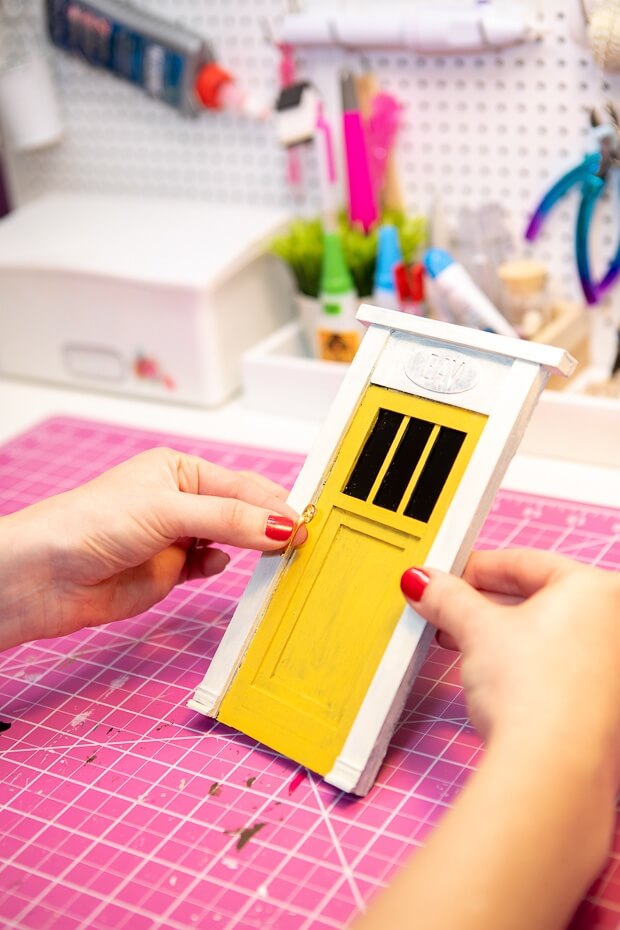
How do you decide when and where to install your next door?
Tiny Doors ATL is a public art love letter to Atlanta. Tiny Doors are installed after a request from the neighborhood. Each door is designed to reflect and highlight what makes its environment unique. I spend up to a year for each door getting to know the architecture, colors and, most importantly, the spirit of the surrounding neighborhood. By reflecting and embracing what’s already there, I can help create a great canvas for a visitor’s imagination.
What’s the craziest request you’ve received?
The craziest request was to make a door so big that people looked tiny standing in front of it … so we did! It’s up on the Atlanta BeltLine now: Door No. 658 (it’s 658 times the size of a tiny door).
How did you end up in the South, and what was the biggest culture shock moving here from Ann Arbor, Michigan?
I came to Atlanta to volunteer teaching bass at Girls Rock Camp ATL and moved here after graduating from Rutgers University. The biggest shock was how much a big city like Atlanta can maintain small-town friendliness. I lived in New Jersey and missed the “nobody’s a stranger” atmosphere of my hometown. Atlanta is a big city with a small-town heart.
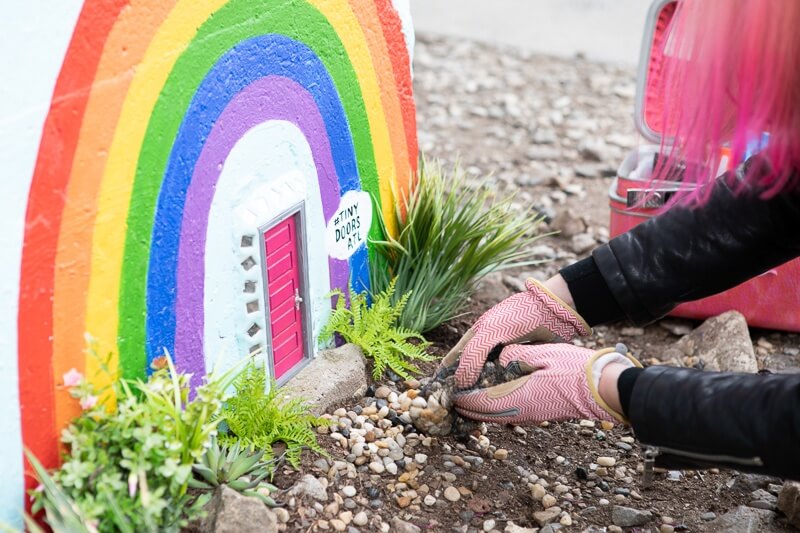

You went from playing bass in a touring punk band to creating public art. Describe the connection you see and feel between music and art.
In my 20s, I played bass and loved meeting people in communities all over the country. We would play clubs and local venues where performance art and live painting were part of the experience. I always loved the interactive and community building elements of musical performance but saw visual art as more of an isolating experience. I don’t remember the moment I realized that a visual artist could also interact with the public and engage people in a conversational way, but I know that it’s a huge part of what set me on the path to art school.
You’ve participated in many engaging public speaking appearances. What guidance can you offer those of us who aren’t as comfortable getting up in front of a crowd?
My first public speech out of college was a TEDx talk about Tiny Doors ATL. I lost my voice that morning and had to give the biggest talk of my life with no experience and almost no ability to speak. After that, nothing about public speaking scares me. I learned to let go of the fear and appreciate every moment of talking about something that brings me so much joy. It’s not guidance that I can offer, so much as encouragement to jump in the deep end!
Tiny Doors ATL has, what I would say, a cult-like following — both in real life and on social media. To what do you attribute this voracious fandom?
When you’re making art that speaks to you (and let’s face it, I didn’t get into tiny street art thinking anybody would ‘get it’), and other people like it too, it’s an incredible and humbling feeling. Fans of Tiny Doors ATL are people who believe in that little spark of imagination in the world and aren’t afraid to engage with their curiosity. From the first day that tiny items started appearing in front of the doors to now, I felt excited and honored to share this journey with them!
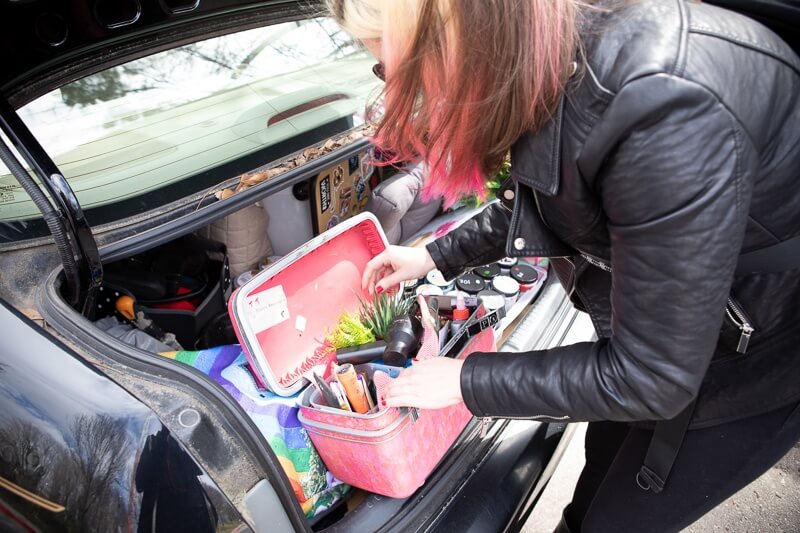
RELATED: Meet the Woman Whose Knitting Spun a Global Yarn Bombing Movement
How many Tiny Doors are there now? Which is your favorite and why?
There are currently 15 doors that are public, wheelchair accessible and free to visit. It’s impossible to pick a favorite, but I’m always fond of Door No. 2 on the Atlanta BeltLine. It has been the hardest to maintain over the years, but I’ve sat nearby and watched the smiles on people’s faces as they encounter the tiny rainbow for the first time … it’s absolutely worth it.
Why is street art considered a man’s genre, and how are you helping to break stereotypes?
Women have been making important art around every corner for longer than I’ve been alive, and I have them to thank for paving the way. A way that I work to break the stereotype is prioritizing collaborations with other women and femmes when I am commissioned for public work. Atlanta is fortunate to have many women in the street art community.
Which artists and/or public art installations are your current favorites?
I love public art that plays with perception and reacts to its environment. Some of my favorites are Ouizi, a Detroit-based artist whose mammoth-scale floral murals fill me with joy and inspiration, and Tom Bob in New York City, who changes the perception and meaning of everyday street items, like pipes and manhole covers, by painting them as new creatures and scenes.
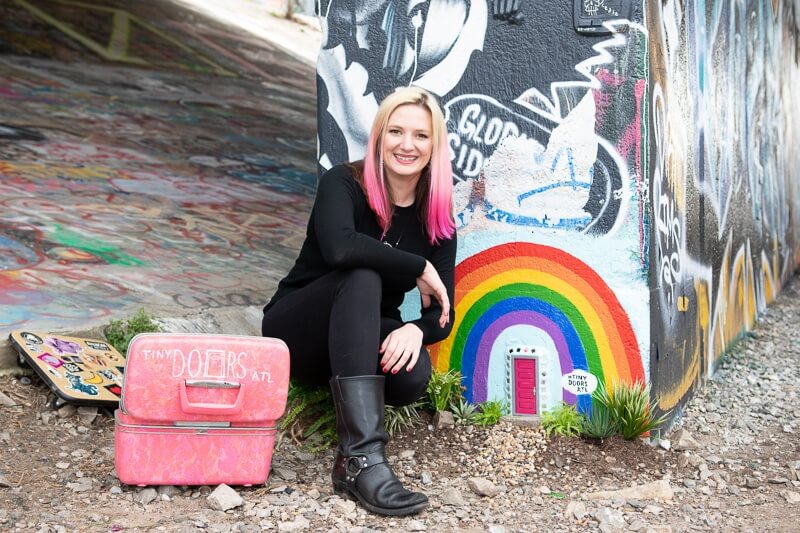
What’s the best piece of advice you’ve ever been given?
I asked a friend whose career I admire, Emily Saliers of Indigo Girls, how to cope when your career starts to get overwhelming. She told me, “Find something you love about your job and do more of it. Find the thing you dislike the most and don’t do it, or do less of it. Everything in between is just your job.”
What three things can you NOT live without (excluding friends, family and faith)?
A to-do list, my studio and art (not necessarily my own — I keep work by my favorite artists around for inspiration)
A big (or should we say “tiny”) thanks to Karen Anderson for opening up the doors to her life, her mission and, of course, the actual doors of Tiny Doors ATL. And as always, a BIG shoutout to photographer extraordinaire, Catrina Maxwell of CatMax Photography.
**********
Meet more amazing Southern women in our FACES archives. Click HERE!




















